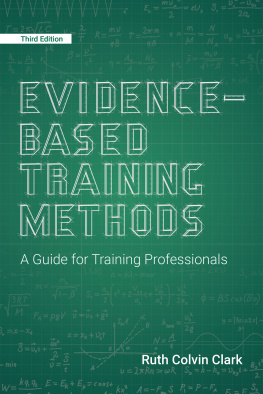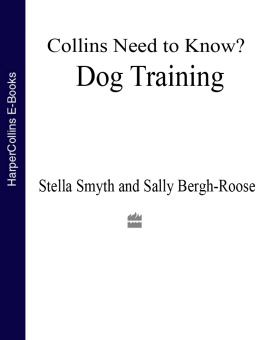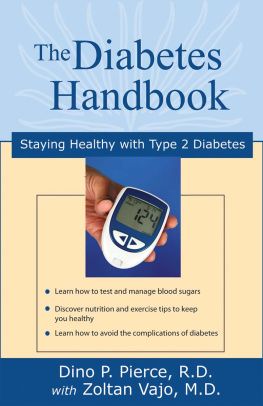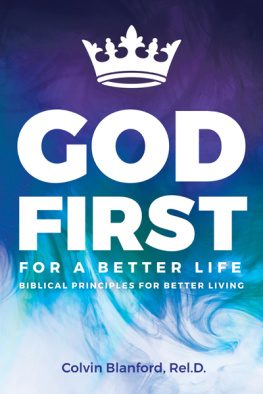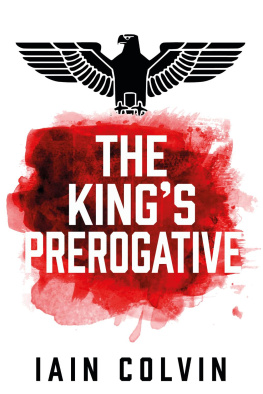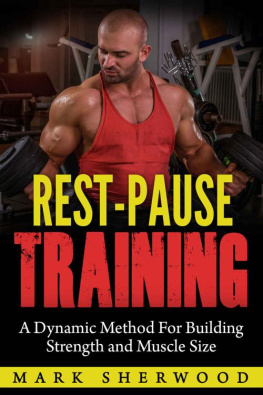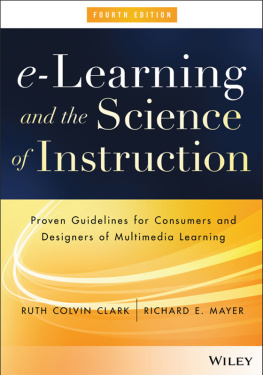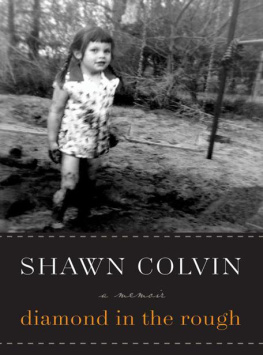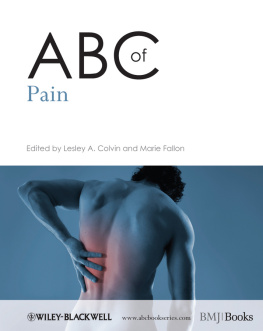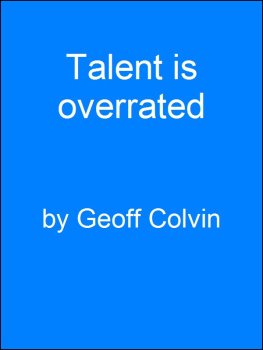Ruth Colvin Clark - Evidence-Based Training Methods
Here you can read online Ruth Colvin Clark - Evidence-Based Training Methods full text of the book (entire story) in english for free. Download pdf and epub, get meaning, cover and reviews about this ebook. year: 2019, publisher: Association for Talent Development, genre: Children. Description of the work, (preface) as well as reviews are available. Best literature library LitArk.com created for fans of good reading and offers a wide selection of genres:
Romance novel
Science fiction
Adventure
Detective
Science
History
Home and family
Prose
Art
Politics
Computer
Non-fiction
Religion
Business
Children
Humor
Choose a favorite category and find really read worthwhile books. Enjoy immersion in the world of imagination, feel the emotions of the characters or learn something new for yourself, make an fascinating discovery.
- Book:Evidence-Based Training Methods
- Author:
- Publisher:Association for Talent Development
- Genre:
- Year:2019
- Rating:4 / 5
- Favourites:Add to favourites
- Your mark:
- 80
- 1
- 2
- 3
- 4
- 5
Evidence-Based Training Methods: summary, description and annotation
We offer to read an annotation, description, summary or preface (depends on what the author of the book "Evidence-Based Training Methods" wrote himself). If you haven't found the necessary information about the book — write in the comments, we will try to find it.
Evidence-Based Training Methods — read online for free the complete book (whole text) full work
Below is the text of the book, divided by pages. System saving the place of the last page read, allows you to conveniently read the book "Evidence-Based Training Methods" online for free, without having to search again every time where you left off. Put a bookmark, and you can go to the page where you finished reading at any time.
Font size:
Interval:
Bookmark:


2020 ASTD DBA the Association for Talent Development (ATD)
All rights reserved. Printed in the United States of America.
22 21 20 19 1 2 3 4 5
No part of this publication may be reproduced, distributed, or transmitted in any form or by any means, including photocopying, recording, information storage and retrieval systems, or other electronic or mechanical methods, without the prior written permission of the publisher, except in the case of brief quotations embodied in critical reviews and certain other noncommercial uses permitted by copyright law. For permission requests, please go to www.copyright.com, or contact Copyright Clearance Center (CCC), 222 Rosewood Drive, Danvers, MA 01923 (telephone: 978.750.8400; fax: 978.646.8600).
ATD Press is an internationally renowned source of insightful and practical information on talent development, training, and professional development.
ATD Press
1640 King Street
Alexandria, VA 22314 USA
Ordering information: Books published by ATD Press can be purchased by visiting ATDs website at www.td.org/books or by calling 800.628.2783 or 703.683.8100.
Library of Congress Control Number: 2019956104
ISBN-10: 1-949036-57-X
ISBN-13: 978-1-949036-57-2
e-ISBN: 978-1-949036-58-9
ATD Press Editorial Staff
Director: Sarah Halgas
Manager: Melissa Jones
Community of Practice Manager, Science of Learning: Justin Brusino
Developmental Editor: Kathryn Stafford
Production Editor: Hannah Sternberg
Text Design: Michelle Jose
Cover Design: Rose Richey
Printed by P. A. Hutchinson Company, Mayfield, PA
I wrote the first edition of Evidence-Based Training Methods because there was a wealth of reports from research scientists in the academic literature. I believed then and today that much of this evidence remains unknown to practitioners. Academic research professionals and workforce learning practitioners constitute two quite separate communities of practice; there is little overlap in their publications and conferences. Most practitioners lack the time to search, read, and synthesize the many research reports available. Plus, although many research papers do give some guidance for practitioners, guidance is not their main goal. I believe practitioners need not only guidelines but also examples to illustrate implementing those guidelines.
Naturally, research continues to evolve. Fortunately, the science of instruction and learning does not move as quickly as, for example, medical research. However, many of the guidelines in the second edition needed updating. In the past few years, the research community has broadened their inquiry to evaluate not only immediate learning but also delayed learning and motivation. Sometimes an instructional method that may not offer big learning advantages but that is highly motivational is worth implementing.
Two new chapters in this edition focus on feedback and animations. Some topics such as games have inspired a great deal of recent research leading to updated chapters. I am also encouraged by a continued interest in evidence-based guidelines among practitionersespecially those in the allied health professions stimulated by the focus on evidence-based medicine. Finally, what author does not look back on their previous writing and not want to improve it? A third edition has offered me the opportunity to pursue all these goals.
This book is organized from smaller to larger instructional elements. Following the introductory chapters, I focus in I take a more macro view of lesson design with guidelines for explanations, teaching procedures, and building critical thinking skills. The book ends with an updated chapter on games and a recap of many evidence-based guidelines as they apply to your instructional design and development processes.
Each chapter includes introductory questions about the instructional method, some evidence on those questions, guidelines based on the evidence, and a short application checklist at the end. For a quick overview, go to the appendix to see a high-level checklist of guidelines, then go back to the specific chapters that review the evidence regarding any guidelines of particular interest to you.
There are many topics of interest in our field and you might wonder why certain topics are not addressed. My selection of topics is guided by the evidence available and by my ability to create a coherent set of guidelines around that evidence.
No one person can claim to be cognizant of all relevant evidence. My apologies for omissions. Nor can I claim a flawless interpretation of the evidence I do review. In this edition I have cited the evidence sources. These citations provide you the opportunity to review the evidence firsthand and draw your own conclusions.
Ruth Colvin Clark, 2020
Do you talk on your cell phone (handheld or hands free) while driving? If yes, you are not alone. At any given moment about 7 percent of all drivers are using their phones (Zebra 2019). According to the National Safety Council, about a quarter of all crashes involve cell phone conversations. Evidence shows that even hands-free cell phones are potentially lethal distractions, putting you at four times greater risk of a crash. As of early 2009, when the first edition of this book was written, five states had banned handheld phones while driving. As I write this updated edition 10 years later, 20 states have similar bans (National Conference State Legislatures). In the first half of 2019, Arizona signed a cell phone ban law. The legislation was not prompted primarily by evidence but rather by a well-publicized death of a local patrol officer killed by a driver who was texting at the time.
The journey from evidence to application of evidence is often slow, and workforce learning is no exception. This chapter will show how applying evidence to your instructional programs and products can save your organization time and money wasted on training fads that dont work.
Our story starts in the early 1600sthe birth years of evidence-based practice. Prior to 1628, people believed that blood was produced by the heart and the liver and was continuously used up by the body. In other words, there was no accurate conception of blood circulation. William Harvey introduced the revolutionary idea that blood was not consumed by the body. Based on measures of blood volume and anatomical observations, he proposed that blood was pumped from the heart and circulated throughout the body, returning again to the heart. Harvey, along with Galileo, Descartes, and others, turned the 17th century world upside down by advocating evidence and reasonrather than traditional wisdom and faithas the basis for knowledge and decisions.
Weve come a long way from the days when medical diagnosis and treatments were based on a balance of the four body humors of blood, phlegm, black bile, and yellow bile. If you were lucky, your treatment prescribed an amulet, which at least did no harm. If you were not so lucky, you were subjected to bloodletting. Although great strides were made in medical science, more than 400 years passed before health science professionals formally adopted evidence-based practice. Old habits die hard. Even though weve had evidence about the dangers of cell phones while driving for more than 20 years, that data is still being translated into policy changes. To see the latest updates on use of technology while driving, search the websites of the National Safety Council and the Insurance Institute for Highway Safety.
Font size:
Interval:
Bookmark:
Similar books «Evidence-Based Training Methods»
Look at similar books to Evidence-Based Training Methods. We have selected literature similar in name and meaning in the hope of providing readers with more options to find new, interesting, not yet read works.
Discussion, reviews of the book Evidence-Based Training Methods and just readers' own opinions. Leave your comments, write what you think about the work, its meaning or the main characters. Specify what exactly you liked and what you didn't like, and why you think so.

